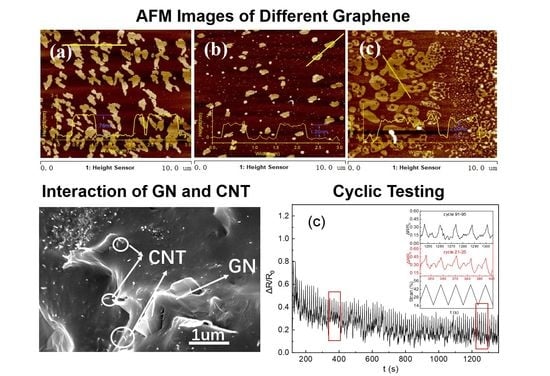Effects of Graphene Morphology on Properties of Carbon Nanotube/Polyurethane Film Strain Sensors
Abstract
1. Introduction
2. Materials and Methods
2.1. Materials
2.2. Preparation of GNs
2.3. Fabrication of PU-Based Films and Film Strain Sensors
2.4. Characterizations
3. Results and Discussion
3.1. Morphologies of GN
3.2. Chemical Characteristics of Prepared GN and GO
3.3. Dispersion of GN and CNT in PU Films
3.4. Electrical Properties of GN-CNT/PU Composite Films and Flexible Sensors
4. Conclusions
Author Contributions
Funding
Institutional Review Board Statement
Informed Consent Statement
Data Availability Statement
Conflicts of Interest
References
- Yunus, M.; Mukhopadhyay, S.C. Development of planar electromagnetic sensors for measurement and monitoring of environmental parameters. Meas. Sci. Technol. 2011, 22, 025107. [Google Scholar] [CrossRef]
- Tashiro, K.; Wakiwaka, H.; Mori, T.; Nakano, R.; Harun, N.H.; Misron, N. Experimental confirmation of cylindrical electromagnetic sensor design for liquid detection application. In Sensing Technology: Current Status and Future Trends IV; Mason, A.S., Mukhopadhyay, S., Jayasundera, K., Eds.; Springer International Publishing: Cham, Switzerland, 2015; Volume 12, pp. 119–137. [Google Scholar] [CrossRef]
- Zia, A.I.; Rahman, M.; Mukhopadhyay, S.C.; Yu, P.L.; Al-Bahadly, I.H.; Gooneratne, C.P.; Kosel, J.; Liao, T.S. Technique for rapid detection of phthalates in water and beverages. J. Food Eng. 2013, 116, 515–523. [Google Scholar] [CrossRef]
- Park, J.J.; Hyun, W.J.; Mun, S.C.; Park, Y.T.; Park, O.O. Highly stretchable and wearable graphene strain sensors with controllable sensitivity for human motion monitoring. ACS Appl. Mater. Inter. 2015, 7, 6317–6324. [Google Scholar] [CrossRef] [PubMed]
- Wu, X.; Han, Y.; Zhang, X.; Lu, C. Highly sensitive, stretchable, and wash-durable strain sensor based on ultrathin conductive layer@polyurethane yarn for tiny motion monitoring. ACS Appl. Mater. Inter. 2016, 8, 9936–9945. [Google Scholar] [CrossRef] [PubMed]
- Jian, Z.; Xu, X.; Hu, Y.; Lubineau, G. Deformable and wearable carbon nanotube microwire-based sensors for ultrasensitive monitoring of strain, pressure and torsion. Nanoscale 2017, 9, 604–612. [Google Scholar] [CrossRef]
- Tao, X.M.; Wang, F.; Liu, S.; Shu, L. Low-dimensional carbon based sensors and sensing network for wearable health and environmental monitoring. Carbon 2017, 121, 353–367. [Google Scholar] [CrossRef]
- Yin, B.; Wen, Y.W.; Hong, T.; Xie, Z.S.; Yuan, G.L.; Ji, Q.M.; Jia, H.B. Highly stretchable, ultrasensitive, and wearable strain sensors based on facilely prepared reduced graphene oxide woven fabrics in an ethanol flame. ACS Appl. Mater. Inter. 2017, 9, 32054–32064. [Google Scholar] [CrossRef]
- Yan, T.; Wang, Z.; Wang, Y.Q.; Pan, Z.J. Carbon/graphene composite nanofiber yarns for highly sensitive strain sensors. Mater Design. 2018, 143, 214–223. [Google Scholar] [CrossRef]
- Chun, S.; Son, W.; Kim, H.; Lim, S.K.; Pang, C.; Choi, C. Self-powered pressure- and vibration-sensitive tactile sensors for learning technique-based neural finger skin. Nano Lett. 2019, 19, 3305–3312. [Google Scholar] [CrossRef]
- Zhu, B.; Niu, Z.; Wang, H.; Leow, W.R.; Wang, H.; Li, Y.; Zheng, L.; Wei, J.; Hou, F.; Chen, X. Microstructured graphene arrays for highly sensitive flexible tactile sensors. Small 2014, 10, 3625–3631. [Google Scholar] [CrossRef]
- Wei, Y.; Qiao, Y.; Jiang, G.; Wang, Y.; Ren, T.L. A wearable skin-like ultra-sensitive artificial graphene throat. ACS Nano 2019, 13, 8639–8647. [Google Scholar] [CrossRef] [PubMed]
- Liu, H.; Li, Y.; Dai, K.; Zheng, G.; Liu, C.; Shen, C.; Yan, X.; Guo, J.; Guo, Z. Electrically conductive thermoplastic elastomer nanocomposites at ultralow graphene loading levels for strain sensor applications. J. Mater. Chem. C 2015, 4, 157–166. [Google Scholar] [CrossRef]
- Liu, L.; Zhang, D. The sensitive electrical response of reduced graphene oxide-polymer nanocomposites to large deformation. Compos. Part A Appl. Sci. Manuf. 2015, 75, 46–53. [Google Scholar] [CrossRef]
- Tian, Y.; Wang, D.Y.; Li, Y.T.; Tian, H.; Ren, T.L. Highly sensitive, wide-range, and flexible pressure sensor based on honeycomb-like graphene network. IEEE Trans. Electron Devices 2020, 67, 2153–2156. [Google Scholar] [CrossRef]
- Vertuccio, L.; Vittoria, V.; Guadagno, L.; Santis, F.D. Strain and damage monitoring in carbon-nanotube-based composite under cyclic strain. Compos. Part A Appl. Sci. Manuf. 2015, 71, 9–16. [Google Scholar] [CrossRef]
- Christ, J.F.; Aliheidari, N.; Ameli, A.; Pötschke, P. 3D printed highly elastic strain sensors of multiwalled carbon nanotube/thermoplastic polyurethane nanocomposites. Mater. Design 2017, 131, 394–401. [Google Scholar] [CrossRef]
- Tung, T.T.; Robert, C.; Castro, M.; Feller, J.F.; Kim, T.Y.; Suh, K.S. Enhancing the sensitivity of graphene/polyurethane nanocomposite flexible piezo-resistive pressure sensors with magnetite nano-spacers. Carbon 2016, 108, 450–460. [Google Scholar] [CrossRef]
- Slobodian, P.; Riha, P.; Kondo, H.; Cvelbar, U.; Olejnik, R.; Matyas, J.; Sekine, M.; Hori, M. Transparent elongation and compressive strain sensors based on aligned carbon nanowalls embedded in polyurethane. Sens. Actuat. A Phys. 2020, 306, 111946. [Google Scholar] [CrossRef]
- Chen, X.; Xiang, D.; Li, J.; Zhang, X.; Jones, E.H.; Wu, Y.; Zhao, C.; Li, H.; Li, Z.; Wang, P.; et al. Flexible Strain Sensors with Enhanced Sensing Performance Prepared from Biaxially Stretched Carbon Nanotube/Thermoplastic Polyurethane Nanocomposites. ACS Appl. Electron. Mater. 2022, 4, 3071–3079. [Google Scholar] [CrossRef]
- Tran, M.T.; Tung, T.T.; Sachan, A.; Losic, D.; Castro, M.; Feller, J.F. 3D sprayed polyurethane functionalized graphene/carbon nanotubes hybrid architectures to enhance the piezo-resistive response of quantum resistive pressure sensors. Carbon 2020, 168, 564–579. [Google Scholar] [CrossRef]
- Zhang, X.; Su, J.; Wang, X.Y.; Tong, X.L.; Yao, F.L.; Yuan, C.D. Synthesis of graphene aerogels using cyclohexane and n-butanol as soft templates. RSC Adv. 2020, 10, 14283–14290. [Google Scholar] [CrossRef] [PubMed]
- Srivastava, S.; Kashyap, P.K.; Singh, V.; Senguttuvan, T.D.; Gupta, B.K. Nitrogen doped high quality CVD grown graphene as a fast responding NO2 gas sensor. New J. Chem. 2018, 42, 9550–9556. [Google Scholar] [CrossRef]
- Parvez, K.; Wu, Z.S.; Li, R.; Liu, X.; Graf, R.; Feng, X.; Müllen, K. Exfoliation of graphite into graphene in aqueous solutions of inorganic salts. J. Am. Chem. Soc. 2014, 136, 6083–6091. [Google Scholar] [CrossRef] [PubMed]
- Zhang, Y.; Xu, Y. Simultaneous electrochemical dual-electrode exfoliation of graphite toward scalable production of high-quality graphene. Adv. Funct. Mater. 2019, 29, 1902171. [Google Scholar] [CrossRef]
- Qiu, A.; Jia, Q.; Yu, H.; Oh, H.; Li, D.; Hsu, H.; Kawashima, N.; Zhuge, Y.; Ma, J. Highly sensitive and flexible capacitive elastomeric sensors for compressive strain measurements. Mater. Today Commun. 2021, 26, 102023. [Google Scholar] [CrossRef]
- Zhang, R.; Deng, H.; Valenca, R.; Jin, J.; Fu, Q.; Bilotti, E.; Peijs, T. Strain sensing behaviour of elastomeric composite films containing carbon nanotubes under cyclic loading. Compos. Sci. Technol. 2013, 74, 1–5. [Google Scholar] [CrossRef]
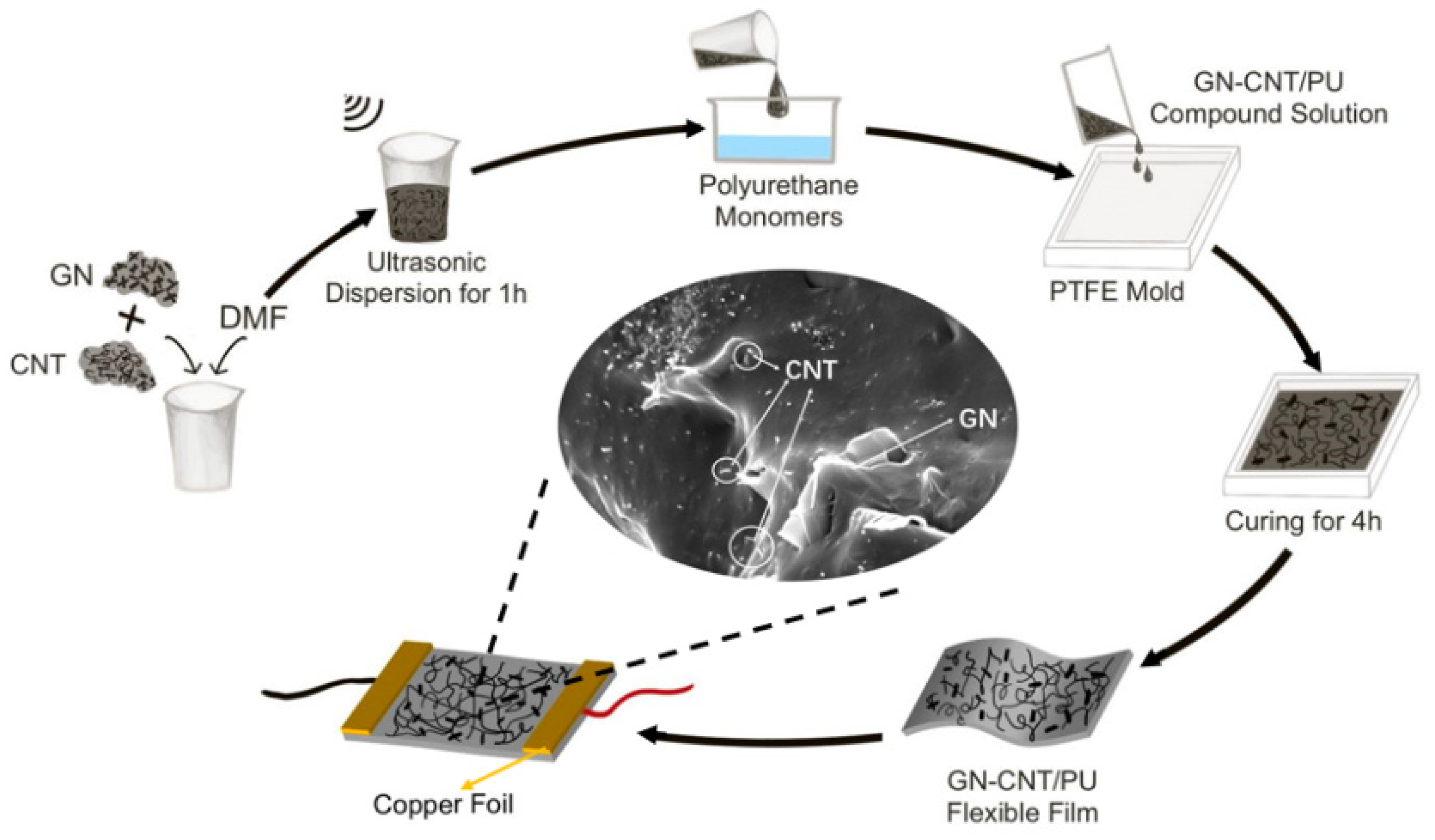
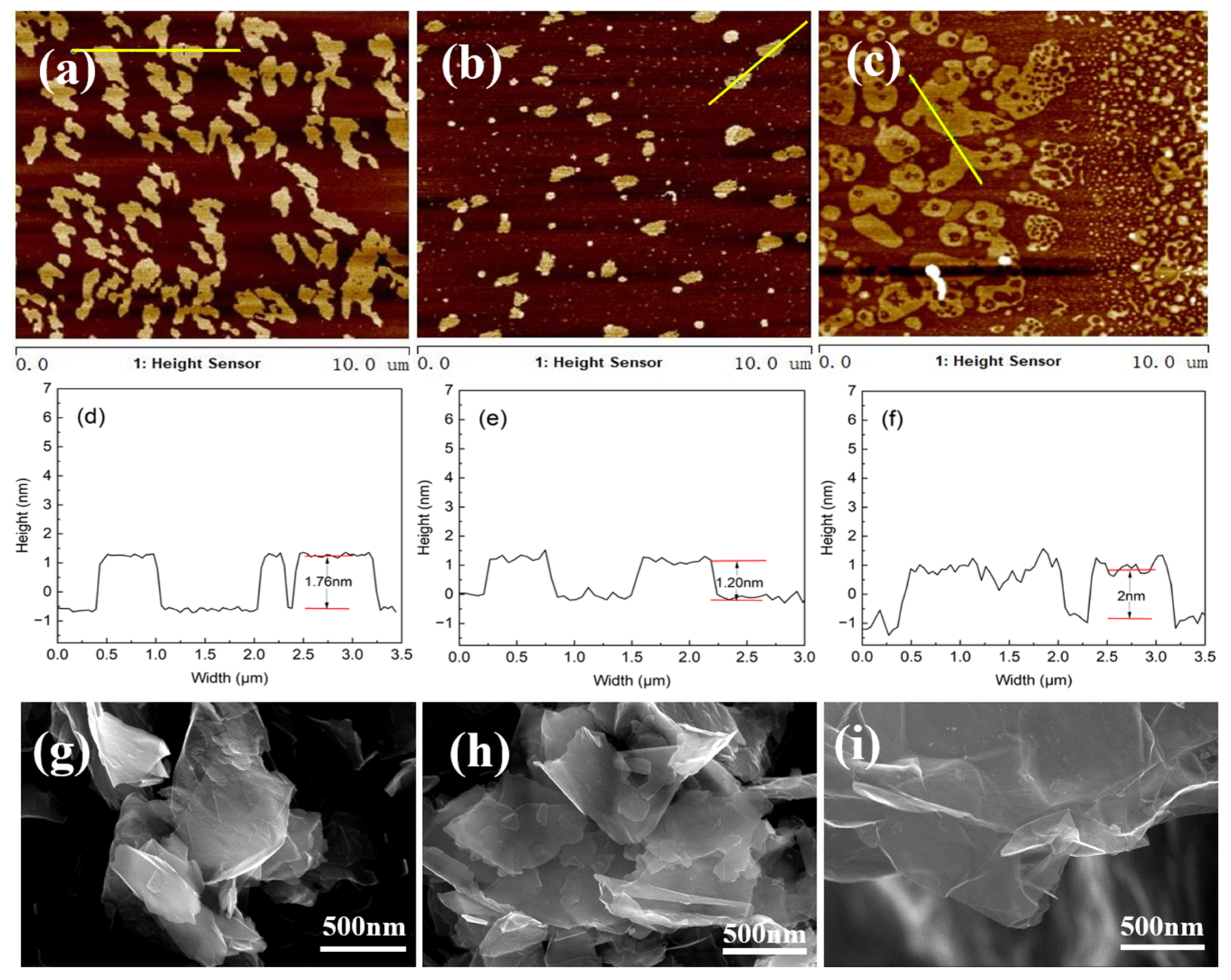
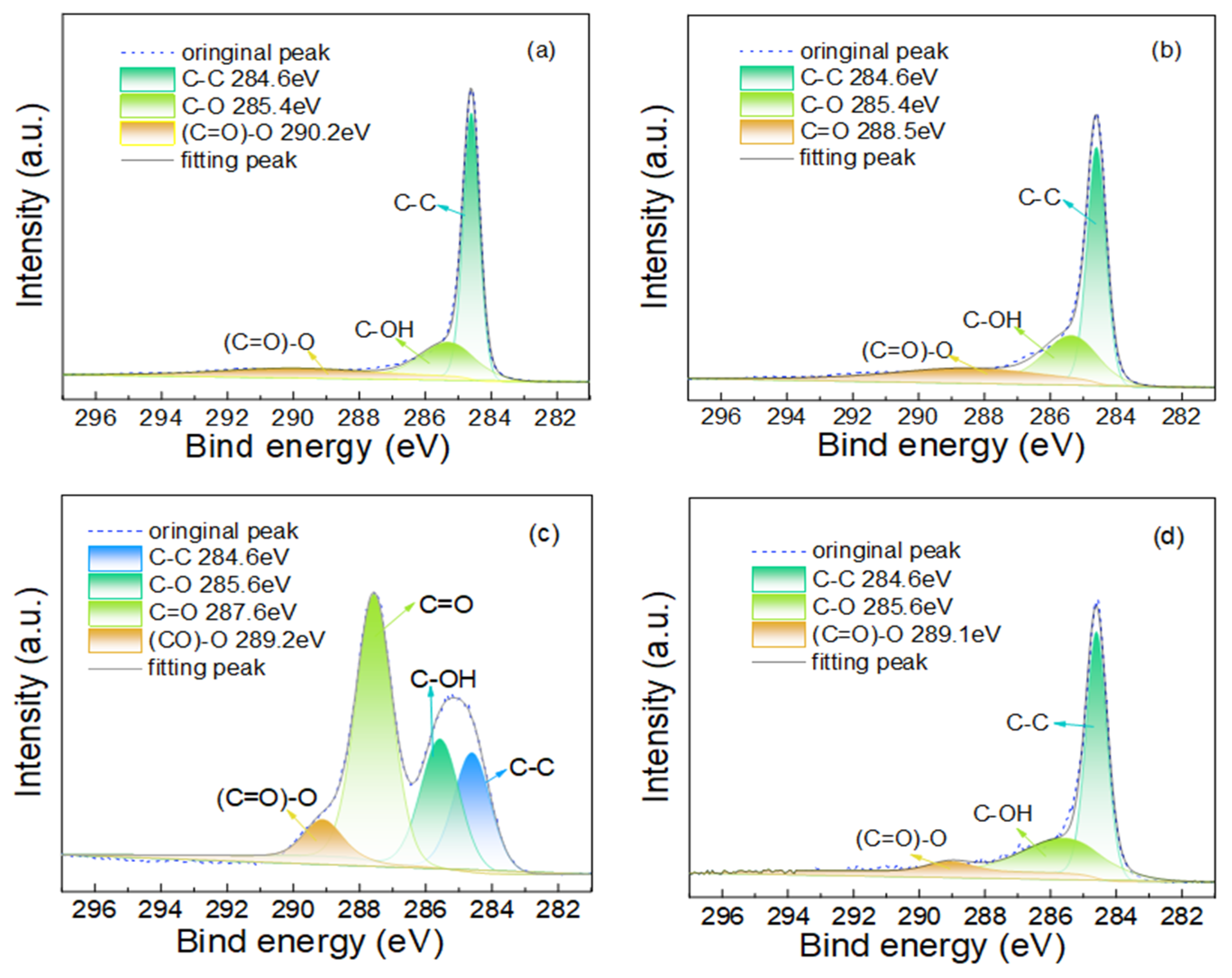


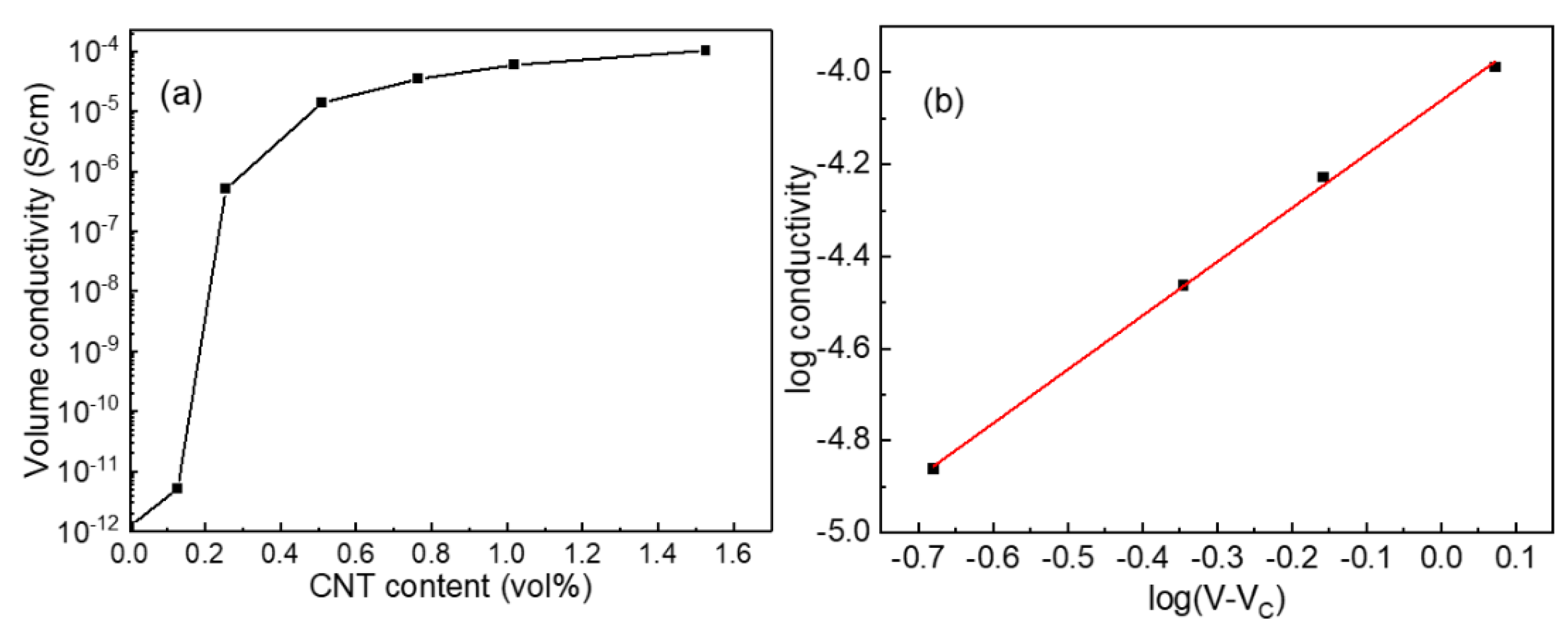
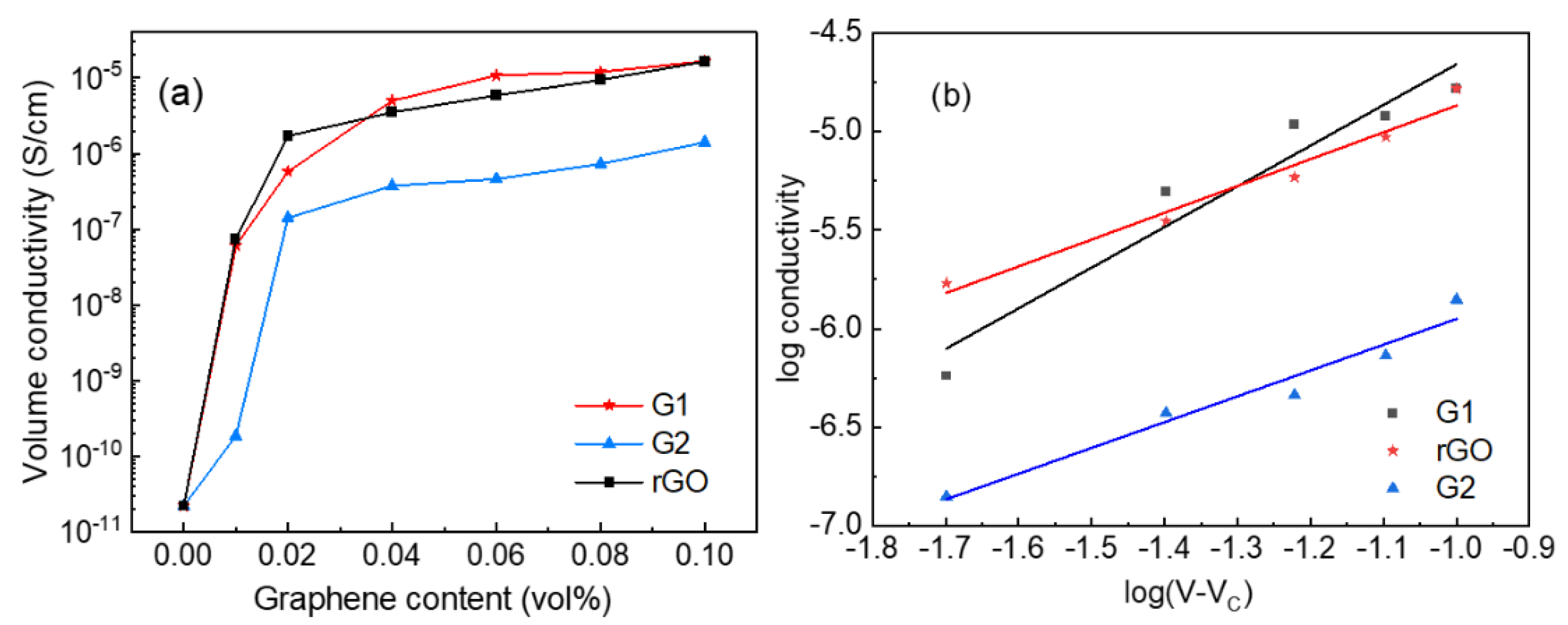
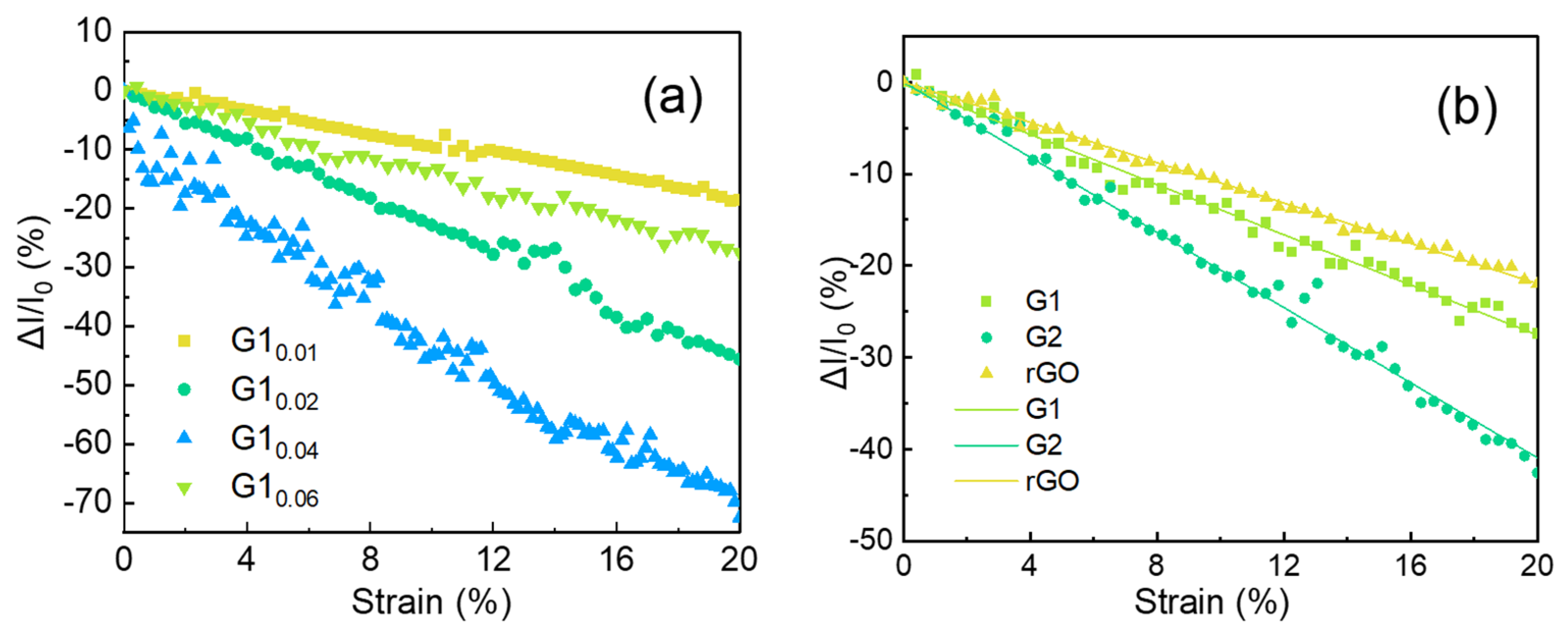
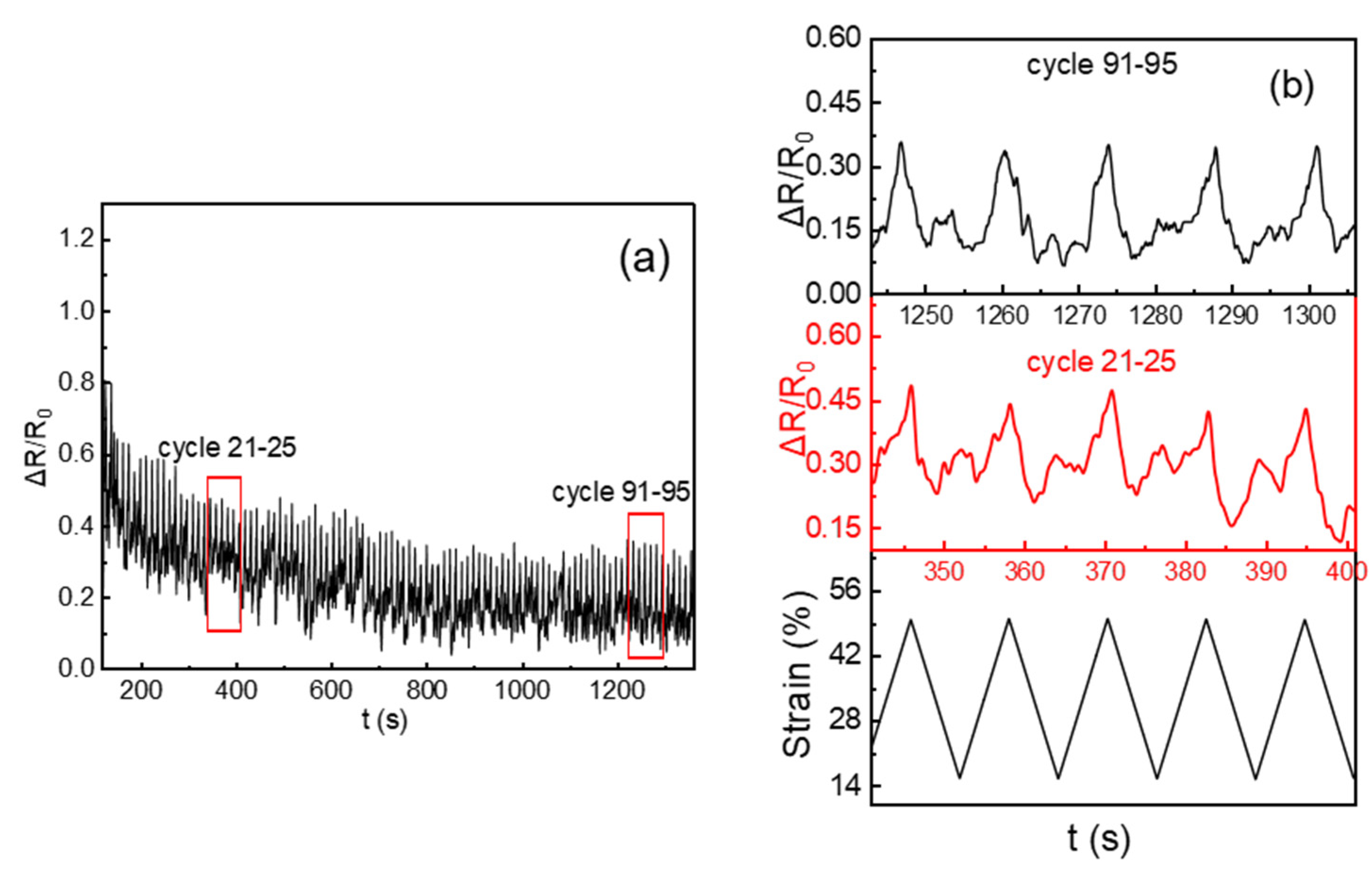
| C Content (Atomic %) | O Content (Atomic %) | C/O Ratios | |
|---|---|---|---|
| G1 | 95.97 | 4.03 | 23.81 |
| G2 | 90.01 | 9.99 | 9.01 |
| GO | 68.04 | 31.96 | 2.12 |
| rGO | 89.44 | 10.56 | 8.47 |
Publisher’s Note: MDPI stays neutral with regard to jurisdictional claims in published maps and institutional affiliations. |
© 2022 by the authors. Licensee MDPI, Basel, Switzerland. This article is an open access article distributed under the terms and conditions of the Creative Commons Attribution (CC BY) license (https://creativecommons.org/licenses/by/4.0/).
Share and Cite
Liu, C.; Ge, X.; Geng, J.; Men, Y.; Yuan, C. Effects of Graphene Morphology on Properties of Carbon Nanotube/Polyurethane Film Strain Sensors. Coatings 2022, 12, 1889. https://doi.org/10.3390/coatings12121889
Liu C, Ge X, Geng J, Men Y, Yuan C. Effects of Graphene Morphology on Properties of Carbon Nanotube/Polyurethane Film Strain Sensors. Coatings. 2022; 12(12):1889. https://doi.org/10.3390/coatings12121889
Chicago/Turabian StyleLiu, Chen, Xiang Ge, Jiaqi Geng, Yuanli Men, and Caideng Yuan. 2022. "Effects of Graphene Morphology on Properties of Carbon Nanotube/Polyurethane Film Strain Sensors" Coatings 12, no. 12: 1889. https://doi.org/10.3390/coatings12121889
APA StyleLiu, C., Ge, X., Geng, J., Men, Y., & Yuan, C. (2022). Effects of Graphene Morphology on Properties of Carbon Nanotube/Polyurethane Film Strain Sensors. Coatings, 12(12), 1889. https://doi.org/10.3390/coatings12121889






